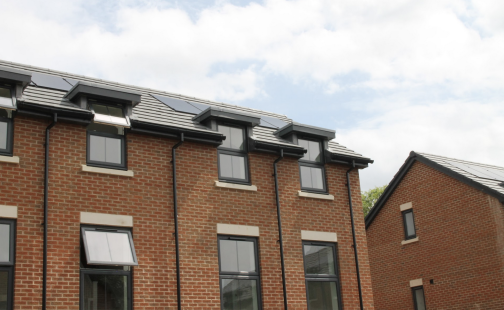How can we achieve the 80% carbon reduction target with HVAC technology available now?

The recent changes to Approved Document L and F, known as Part L and Part F, and the introduction of the new Part O, are precursors to the Future Homes Standard anticipated for 2025. Put together; this is the largest UK regulatory overhaul in 40 years. The aim is to start building net zero ready homes from 2025, and one of the expectations is a requirement to cut carbon emissions by 80% compared to 2013 Part L.
The magnitude of these changes and the speed at which they are being implemented are understandably driven by the net zero carbon target the UK set itself to achieve by 2050. Still, it can be challenging to keep up with these changes in such a short timeframe. At Glen Dimplex Heating & Ventilation (GDHV), we have years of experience in consulting on regulatory requirements, and we are here to help businesses understand and successfully implement the upcoming regulatory changes.

Can user friendly technology help deliver compliance?
The principle of a strong fabric coupled with low carbon heating technologies is at the heart of the Future Homes Standard and the expected 80% carbon emissions reduction target. No one can deny that this will represent a huge shift for many across the industry. Project 80 by Midland Heart shows that it is possible to take a traditional looking dwelling and using innovative products that are already proven and available today, build to achieve the 80% carbon emissions reduction three years ahead of time.
The monitoring phase of Project 80 will enable the construction industry and Government to find out which technologies work when installed and how the occupiers’ ability to use them effectively impacts the energy efficiency of the building. This approach will provide the data invaluable to making informed choices about the best way to meet the UK’s net zero carbon ambitions.
Tony Hopkin, Head of Construction, Quality and Innovation at Midland Heart, explains, “We are exploring anecdotal evidence that some occupants do not get on well with technologies that do not allow for direct control, which is the case with some ASHPs. We are looking at the most user-friendly way to deliver regulations. Both the ASHPs and hybrid electric solutions can deliver 80% CO2 reduction. We are keen to learn how residents get on with these technologies.”
Mike Leonard, CEO of Building Alliance & Visiting Professor in Manufacturing and Construction at Birmingham City University (BCU), highlights the value of the research and monitoring: “It is imperative that we base our future decisions on the design and construction of new homes on real life evidence rather than desktop studies. Project 80 will be an ongoing and an exciting journey”.
Jonathan Jennings, Chief Business Development Officer at GDHV, agrees with Mike and sums up the view within the company:
"We are honoured to have been part of the Project 80 journey alongside so many industry leading experts. Understanding what the future looks like and what heating and hot water choices are available is not only key to the industry and supply chain who build these homes, but also for the people who will occupy them.”
If you would like to learn more about GDHV’s low carbon hybrid electric solutions that could help your project meet the challenges of today’s or tomorrow’s regulations, please contact one of HVAC experts.








